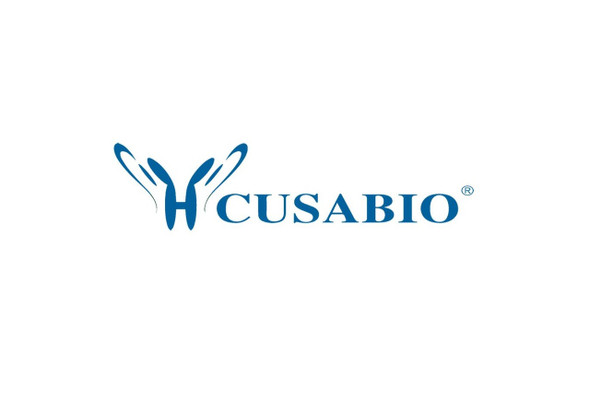Cusabio Mouse Recombinants
Recombinant Mouse Calpain-1 catalytic subunit (Capn1) | CSB-EP004490MO
- SKU:
- CSB-EP004490MO
- Availability:
- 3 - 7 Working Days
Description
Recombinant Mouse Calpain-1 catalytic subunit (Capn1) | CSB-EP004490MO | Cusabio
Alternative Name(s): Calcium-activated neutral proteinase 1 ;CANP 1;Calpain mu-type;Calpain-1 large subunit;Micromolar-calpain ;muCANP
Gene Names: Capn1
Research Areas: Others
Organism: Mus musculus (Mouse)
AA Sequence: MTEELITPVYCTGVSAQVQKKRDKELGLGRHENAIKYLGQDYETLRARCLQSGVLFQDEAFPPVSHSLGFKELGPHSSKTYGIKWKRPTELMSNPQFIVDGATRTDICQGALGDCWLLAAIASLTLNETILHRVVPYGQSFQDGYAGIFHFQLWQFGEWVDVVIDDLLPTKDGKLVFVHSAQGNEFWSALLEKAYAKVNGSYEALSGGCTSEAFEDFTGGVTEWYDLQKAPSDLYQIILKALERGSLLGCSINISDIRDLEAITFKNLVRGHAYSVTGAKQVTYQGQRVNLIRMRNPWGEVEWKGPWSDSSYEWNKVDPYEREQLRVKMEDGEFWMSFRDFIREFTKLEICNLTPDALKSRTLRNWNTTFYEGTWRRGSTAGGCRNYPATFWVNPQFKIRLEEVDDADDYDNRESGCSFLLALMQKHRRRERRFGRDMETIGFAVYQVPRELAGQPVHLKRDFFLANASRAQSEHFINLREVSNRIRLPPGEYIVVPSTFEPNKEGDFLLRFFSEKKAGTQELDDQIQANLPDEKVLSEEEIDDNFKTLFSKLAGDDMEISVKELQTILNRIISKHKDLRTNGFSLESCRSMVNLMDRDGNGKLGLVEFNILWNRIRNYLTIFRKFDLDKSGSMSAYEMRMAIEAAGFKLNKKLHELIITRYSEPDLAVDFDNFVCCLVRLETMFRFFKLLDTDLDGVVTFDLFKWLQLTMFA
Source: E.coli
Tag Info: N-terminal 6xHis-tagged
Expression Region: 1-713aa
Sequence Info: Full Length
MW: 86.1 kDa
Purity: Greater than 90% as determined by SDS-PAGE.
Relevance: Calcium-regulated non-lysosomal thiol-protease which catalyze limited proteolysis of substrates involved in cytoskeletal rodeling and signal transduction.
Reference: Poirier C., Poussard S., Faust D.M., Imaizumi-Sherrer T., Weiss M.C., Ducastaing A., Montarras D., Pinset C., Guenet J.-L. Cloning and characterization of the cDNA and gene encoding the mouse mu-calpain large subunit protein.Sahr K.E., Andrabi S., Peters L.L., Chishti A.H. Comprehensive identification of phosphorylation sites in postsynaptic density preparations.Trinidad J.C., Specht C.G., Thalhammer A., Schoepfer R., Burlingame A.L.Mol. Cell. Proteomics 5:914-922(2006)
Storage: The shelf life is related to many factors, storage state, buffer ingredients, storage temperature and the stability of the protein itself. Generally, the shelf life of liquid form is 6 months at -20?/-80?. The shelf life of lyophilized form is 12 months at -20?/-80?.
Notes: Repeated freezing and thawing is not recommended. Store working aliquots at 4? for up to one week.
Function: Calcium-regulated non-lysosomal thiol-protease which catalyzes limited proteolysis of substrates involved in cytoskeletal remodeling and signal transduction.
Involvement in disease:
Subcellular Location: Cytoplasm, Cell membrane
Protein Families: Peptidase C2 family
Tissue Specificity:
Paythway:
Form: Liquid or Lyophilized powder
Buffer: If the delivery form is liquid, the default storage buffer is Tris/PBS-based buffer, 5%-50% glycerol. If the delivery form is lyophilized powder, the buffer before lyophilization is Tris/PBS-based buffer, 6% Trehalose, pH 8.0.
Reconstitution: We recommend that this vial be briefly centrifuged prior to opening to bring the contents to the bottom. Please reconstitute protein in deionized sterile water to a concentration of 0.1-1.0 mg/mL.We recommend to add 5-50% of glycerol (final concentration) and aliquot for long-term storage at -20?/-80?. Our default final concentration of glycerol is 50%. Customers could use it as reference.
Uniprot ID: O35350
HGNC Database Link: N/A
UniGene Database Link: UniGene
KEGG Database Link: KEGG
STRING Database Link: STRING
OMIM Database Link: N/A









